

Home
About Us
Allotments
Garden Equipment
Seed Suppliers
Manure Problems
Children's Pages
GLA Blog
Weather Blog
School Veg Patch
Useful Links
Snail
The Garden or Common Snail is not at all welcome in our gardens or on our plots. Many gardeners rate the snail and its shell-less relative – the slug - to be the most hated garden pest and much time (and money) is spent trying to find the most effective way of doing away with them. Not all snails do a significant amount of damage in the garden, however the garden snail is one of the most damaging and also one of the most common – hence the alternative name.
The Garden Snail is found in great numbers in any park or garden, in fact anywhere that there is any sort of vegetation. As far as a species goes snails and slugs are extremely successful due in no small part to the fact that they are highly adaptable in terms of habitat and food supply! Also being slimy means that many creatures do not consider them to be an appetising meal. Hedgehogs roll slugs and the soft bodies of snails in soil to get rid of the slime.
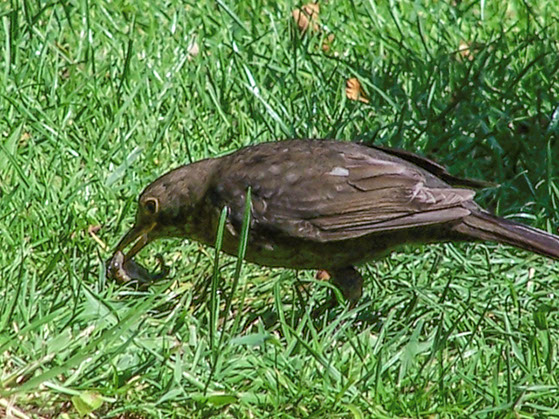
Birds such as song thrushes will bash a snail against a stone in order to break its shell and get at the soft body within. Often the thrush will have a favourite stone with which to carry out the task. This stone or anvil will be surrounded by bits of broken shell.
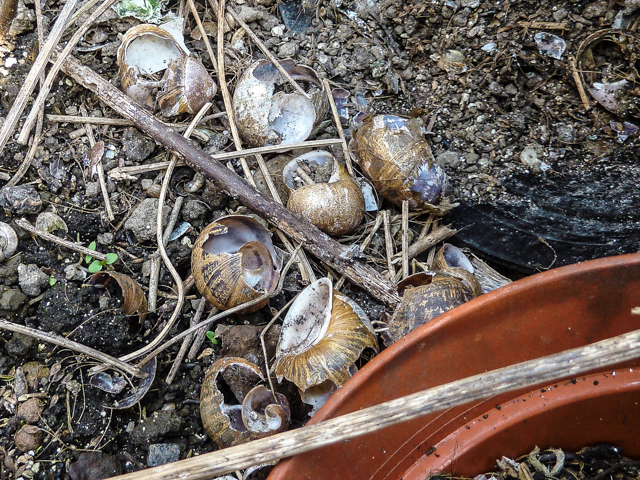
Some areas seem to be more popular with snails than slugs and vice versa. In order to maintain a strong shell the snail prefers areas where there is sufficient calcium in the soil. Our increasing use of concrete must be a godsend to them. In fact we didn’t really notice snails in our garden until we laid a patio of concrete slabs.
Being herbivorous snails feed on decaying plant material, algae, fungi, lichens and plant leaves. They often feed on the choice plants in gardens and a constant battle is raged between gardeners and their slimy foe.
Like slugs and other snails the Garden Snail is a member of the gastropod (stomach-foot) family. As it moves along a leaf or other plant material it scrapes the surface with its rasp like mouth parts a bit like a file.
The shell of the Garden Snail is shaped like a spiral cone and has a wrinkly surface. It is brownish in colour with a blotched mottled appearance. The shell opening has a thickish lip. The snail can withdraw completely into its shell for protection from predators or to prevent its body from drying out during very dry periods. The shell means that the Garden Snail’s moist light grey body is less vulnerable than that of the slug.
The snail has two pairs of tentacles. The smaller lower tentacles are used to feel. The pin-head eyes are situated at the end of the longer tentacles. Both sets of tentacles can be absorbed into the body at the slightest hint of trouble. Snail eyesight is very poor, having only the ability to distinguish light and dark areas. They are much more dependent on their sense of smell using this to locate food.
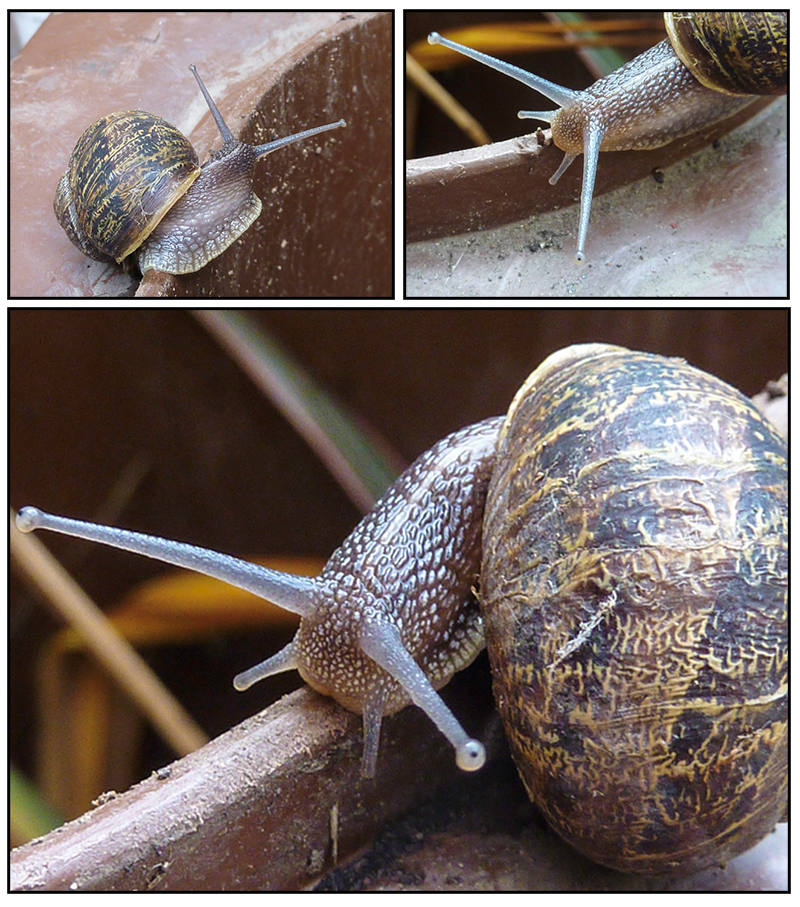
Being a moist bodied creature snails are much more active during damp conditions and at night. If the conditions become too dry the snail will withdraw into its shell and seal the opening to prevent moisture loss. It can survive in this state for several months until the conditions are more favourable.
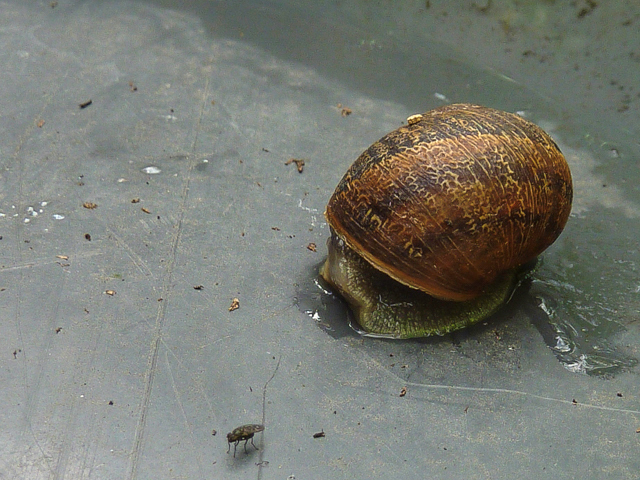
Like the slug the snail moves by rippling its muscular ‘foot’. To help its movement and reduce friction the snail produces mucus along which it can travel leaving the familiar silvery trail behind it. Snails are also very good at climbing and can often be spotted high up buildings.
In winter snails congregate in groups beneath stones or other material to hibernate sealed within their mobile home.
Like the slug the snail is hermaphrodite, in other words it possess both male and female parts. However, to reproduce it still needs to find a mate. Mating occurs during early summer. When a snail spots a suitable mate it will pierce the skin of its chosen one with a ‘love dart’ (maybe this is the original Cupid’s arrow!). The purpose of this isn’t really known, other than it seems to trigger mating after which both snails will lay about 100 small white pearl like eggs. The eggs are transparent and the tiny baby snails can be seen developing inside.
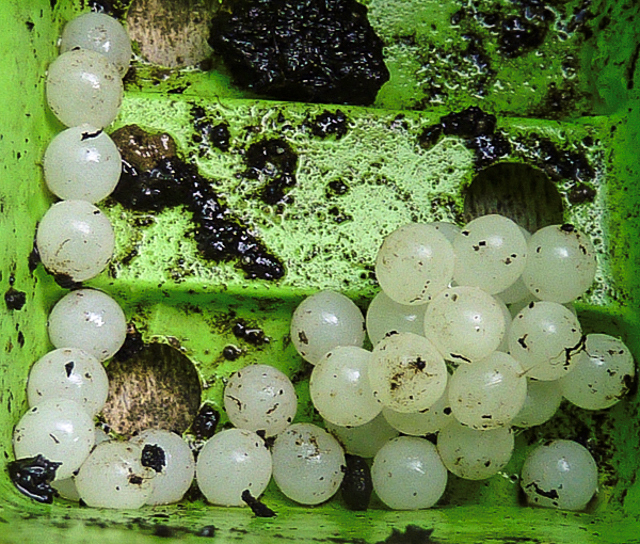
Apparently our garden snail is related to those farmed in France for cooking and it is edible. It is sometimes called a wall fish.
It was also used for centuries as a medicine for sore throats. A broth was made from its mucus – I think I actually prefer the sore throat!!
The garden snail isn't the only type of snail that we find in out garden. Snail shells can be found in a range of colours and shapes. Below is an example
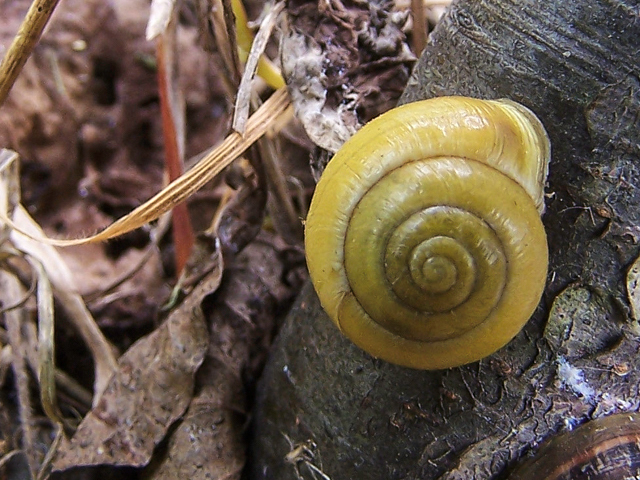
I think these are banded snails and maybe quite young as they were tiny, maybe a little over 10 cm (less than 1/2").
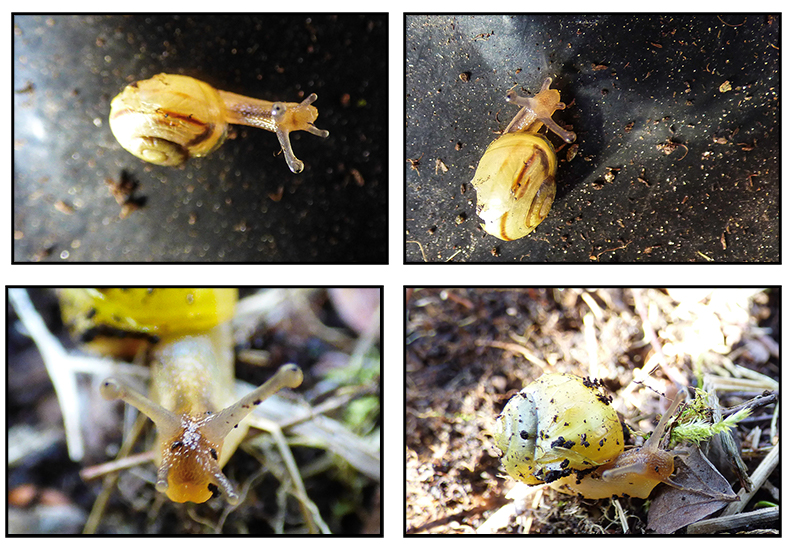
Our Plot at Green Lane Allotments Blog | A Gardener's Weather Diary | School Vegetable Patch Website
© Our Plot on Green Lane Allotments - Please email me if you wish to use any of this site's content